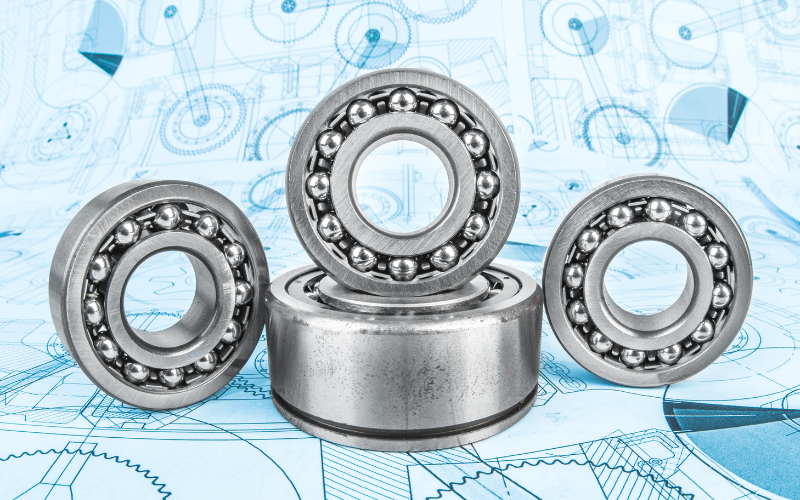Ball bearings play a crucial role in various industrial sectors, primarily due to their ability to minimize friction and enhance the performance of machinery and systems. These components are indispensable and are integrated into several key areas to improve efficiency and functionality. This blog aims to highlight their use in different sectors.
Automobile Industry
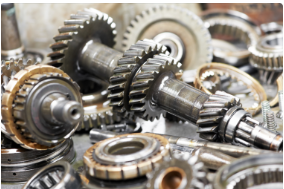
Ball bearings are instrumental in optimizing the performance of the engine. Their application significantly enhances fuel efficiency, making them vital for achieving more environmentally friendly and cost-effective vehicle operation. This improvement in engine efficiency is a testament to the critical role ball bearings play in the automotive sector. Furthermore, ball bearing uses are inevitable.
These are essential in supporting the weight of a vehicle. They are strategically placed on wheels to ensure a smooth and stable rotation. This contributes to a more comfortable ride and the safety and reliability of the vehicle, highlighting the importance of ball bearings in maintaining vehicle performance.
Additionally, a transmission system dramatically benefits from including ball bearings. Positioned within gearboxes, they facilitate seamless gear shifts, allowing for smooth transitions and contributing to the overall performance and durability of the transmission system. This application underscores the versatility and indispensability of ball bearings in enhancing automotive technology and efficiency.
Manufacturing industry
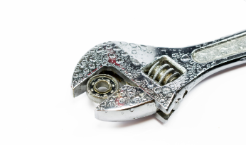
Ball bearings are crucial for the seamless movement of products along conveyor belts, thereby streamlining the production process. They also improve the efficiency of assembly lines by enabling the rotational movements of machinery, which is vital for maintaining high productivity levels.
Robotics industry

The robotics industry also relies heavily on bearings to achieve precision and control. Ball bearings are used in robotic arms to ensure accurate and controlled movements, which are essential for tasks such as welding. Furthermore, they allow for fluid and natural motions in mechanical joints, enhancing the robots’ ability to perform a wide range of functions with human-like capabilities.
Mechanical and Engineering Applications
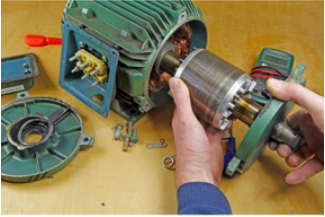
In electric motors, ball bearing uses is to reduce friction, which enhances performance and prolongs longevity of the equipment. In the case of drills and saws, ball bearings are vital in delivering precision and stability. These facilitate smooth and accurate operations. Furthermore, in the case of HVAC systems, they are essential for the smooth and consistent rotation of fans and blowers, ensuring optimal air distribution.
This wide range of applications underscores the importance of ball bearings in improving the functionality and reliability of mechanical and engineering devices.
Commercial Automotive and Transportation
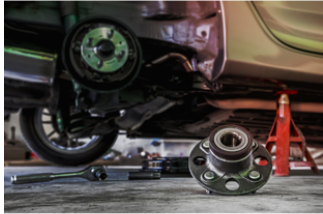
In the commercial automotive and transportation sectors, ball bearings play a crucial role. They are vital components in various parts of a vehicle, significantly improving its operation and efficiency. In wheel assemblies, ball bearings are essential for enabling smooth rotation, which directly contributes to a better driving experience by reducing friction and wear.
Similarly, these bearings are critical for minimizing friction in axles and drivetrains, enhancing the overall performance of the vehicle. Furthermore, ball bearings are integral to the operation of gearboxes and transmissions, where they facilitate efficient power transfer.
Medical and Healthcare Applications

Ball bearings play a crucial role in enhancing the functionality and efficiency of various medical devices. They are integral to surgical tools, facilitating fluid and precise movements essential for successful procedures. Specifically in the case of diagnostic equipment, such as MRI and CT scanners, ball bearings are crucial to achieving smooth and accurate rotations, which are critical for producing clear and detailed diagnostic images.
Furthermore, in prosthetics, the incorporation of ball bearings significantly improves the quality of life for users by providing smoother and more natural movements, thereby enhancing mobility. This application of ball bearings across different medical devices underscores their significance in advancing healthcare technology and patient care.
Sports and Recreation

Sports and recreation equipment, such as skateboards, rollerblades, fishing reels, and bicycles, heavily rely on integrating ball bearings for performance and user experience. The ball bearings are crucial for the wheels in skateboards and rollerblades, allowing riders to glide effortlessly and maintain speed with minimal exertion.
Similarly, fishing reels have bearings that facilitate smooth reeling and casting, streamlining the angling process for a more efficient and enjoyable experience.
Bicycles also depend on ball bearings, especially within the hubs and pedals, to ensure a smooth and responsive ride. These bearings are fundamental in ensuring that each piece of equipment operates efficiently, providing users with a seamless and enjoyable sporting or recreational activity.
Household and Consumer Goods
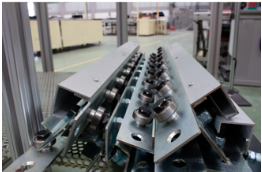
Ball bearings are essential for promoting seamless functioning of various household products such as washing machines, blenders, and vacuum cleaners, facilitating their operations, and enhancing user experience. Similarly, ball bearings contribute significantly to furniture by enabling the smooth rotation of swivel chairs and the effortless sliding of drawers. These small yet powerful elements ensure that everyday items function efficiently, improving the convenience and comfort of daily living.
Aerospace and Defense
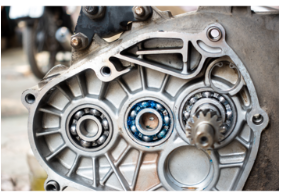
The aerospace and defense industries extensively utilize ball bearings across various applications to enhance performance and reliability. In aircraft engines, these bearings play a crucial role in minimizing friction, thereby optimizing the efficiency of turbines, and contributing to the overall performance and fuel efficiency of the aircraft.
For missile guidance systems, ball bearings are essential in ensuring precision targeting by facilitating accurate and smooth movements, which is critical for the effectiveness of defense operations.
Also, in military vehicles, such as tanks and armored vehicles, ball bearings significantly improve maneuverability. This enhancement allows for better handling and operational capability in diverse and challenging environments, underscoring the importance of ball bearings in modern military and aerospace technology.
Marine and Nautical Applications

Ball bearings are crucial for the smooth functioning of marine and nautical machinery. In marine engines, they are critical components of propulsion systems, offering essential support and minimizing mechanical degradation. These bearings reduce friction between moving parts, enhancing performance and extending the lifespan of the equipment. For sailboat fittings, ball bearings are widely utilized in blocks and winches, ensuring effortless and effective sailing.
By mitigating wear and tear, ball bearings contribute significantly to the maintenance of high-performance standards in marine and nautical operations.
Why should you choose KG India?
KG India emerges as a leading bearing provider in India. The company plays a pivotal role in sustaining the tradition of these critical elements, propelling forward excellence within future industries. By focusing on advanced technologies and quality, KG India ensures that ball bearings remain at the forefront of industrial progress, driving advancements and reliability in applications across the board. Purchase the best from KG India now.

